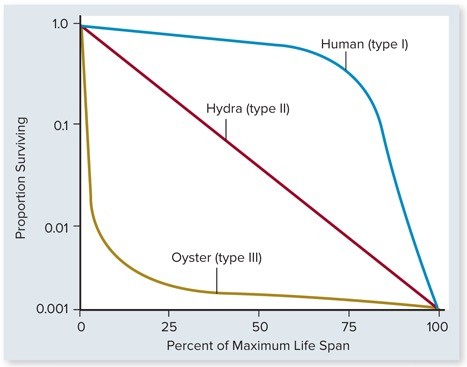The regular fluctuations in size of animal populations are termed _____
I) population cycles
II) population dynamics
III) growth factors
A) only I
B) only II
C) only III
D) only II and III
E) I, II, and III
Answer: A
You might also like to view...
The derived sequence is
The following fragments of DNA correspond to a section of the genome. ACTGT GTGTT GACTC TTCAAC ACTGA TGAC A) C T C A G T C A A C T T G T G T C A B) T G A C A C A A G T T G A C T G A G C) A C T G T G T T C A A C T G A C T C D) A C T G T G T G T T G A C T C T T C A A C A C T G A T G A C
What is a function of the sympathetic nervous system?
a. Dilating the bronchi b. Slowing the heart rate c. Stimulating bile secretion d. Causing the bladder to contract
 What often describes organisms with a Type III life history?
What often describes organisms with a Type III life history?
A. subject to low predation rates B. at their carrying capacity C. K-selected D. idiopathic E. r-selected
The (epithelial/goblet/mucous) cells in the tracheal mucous membrane produce mucus.
Fill in the blank(s) with the appropriate word(s).